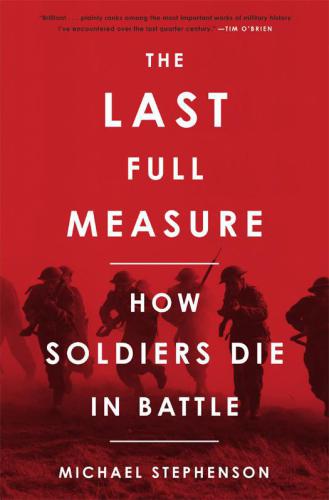
The Last Full Measure
How Soldiers Die in Battle
کتاب های مرتبط
- اطلاعات
- نقد و بررسی
- دیدگاه کاربران
نقد و بررسی

Starred review from April 1, 2012
A military history about the central fact of all wars: death in battle. Stephenson (Patriot Battles: How the War of Independence Was Fought, 2007) begins with the prehistoric era, when warfare consisted of clashes between hunting tribes. Not surprisingly, early tactics were closely allied to the techniques of hunting: ambush of lone enemies or small bands, with little of what we think of as military strategy. That approach to warfare has survived into modern times, especially in conflicts where the resources of the forces involved are disproportionate, as in colonial or insurgent wars. What we would recognize as battles between organized armies arose with civilization, and from the beginning a distinction was made between weapons that strike from a distance and those requiring contact with the enemy: arrows versus swords, for example. Stephenson traces the tension between the modes of warfare dictated by these weapons, and their effect on combatants, working from both archaeological evidence and written sources. The result is a far-reaching overview of the visceral experience of soldiers in battle. The description of wounds is graphic; patriotic propaganda to the contrary, death in warfare is rarely sweet or decorous. Some widely held beliefs about what kills men in war may need revision; artillery, rather than machine guns, was the main killer in World War I, for example, and booby traps and mines have dominated American casualty lists since Vietnam. Stephenson includes close looks at the soldier's experience in Iraq and Afghanistan and offers the viewpoints of German, Russian and even a few Japanese soldiers in the World War II sections. An interesting appendix covers the development of military medicine. Throughout the book, the author is evenhanded, clear and consistently illuminating; even those well-read in military history are likely to learn something new. A first-rate addition to the military history canon.
COPYRIGHT(2012) Kirkus Reviews, ALL RIGHTS RESERVED.

June 1, 2012
Underlining the gravity of war, Stephenson (former editor, Military Book Club; Patriot Battles) provides vivid descriptions of the ways in which soldiers have died in battle throughout history. Arranged chronologically, the book begins with analyses of ancient weapons and armor, and the deaths and destruction they caused, and then proceeds through history to discuss modern warfare. The physical and psychological effects of weapons are constant themes. Interspersed are discussions of battle tactics used with various weapons, as well as cultural influences upon the uses of said tactics. As the account progresses into the 20th century, a plethora of eyewitness accounts illustrate the awful realities of warfare. Although these reminiscences reinforce the narrative, they are so frequent in the last few chapters that they dominate the book, making it a jumbled collection of tidbits from primary sources. VERDICT Though Stephenson achieves his goal of revealing the horrors of combat, some readers may prefer the coverage of this topic within such books as John Keegan's The Face of Battle or Jared Diamond's Guns, Germs, and Steel. Military history buffs will want to consider.--Matthew J. Wayman, Pennslyvania State Univ. Schuylkill Lib.
Copyright 2012 Library Journal, LLC Used with permission.

April 15, 2012
Concentrating on war's essential act of killing, Stephenson ranges among its descriptions, from the Iliad to accounts of the Iraq War, to convey the experience of battlefield death. Sparing no sensitivities, his graphic quotations, whether of Homeric swordfights or of WWII artillery barrages, pummel the armchair comfort of the reader, who, as Stephenson's preface adjures, cannot genuinely understand combat. Only surviving witnesses to the dead can, and he plumbs their memoirs for the physical manner in which a soldier could meet oblivion throughout history. Though death's messenger has changed technological form, from the javelin to the rocket-propelled grenade, certain soldierly continuities interest Stephenson, such as the concept of a heroic versus an ignominious death; the visceral, powerful emotions of fighting to the death; and psychological accommodation to the prospect of being killed. Backing up the memoirists with statistics on the most lethal of an era's weaponry (e.g., the rifle in the Civil War, the land mine in postWWII counterinsurgencies), Stephenson observantly but implacably strips war to its naked central action. A must-read for the audience for John Keegan's classic, The Face of Battle (1983).(Reprinted with permission of Booklist, copyright 2012, American Library Association.)

























دیدگاه کاربران